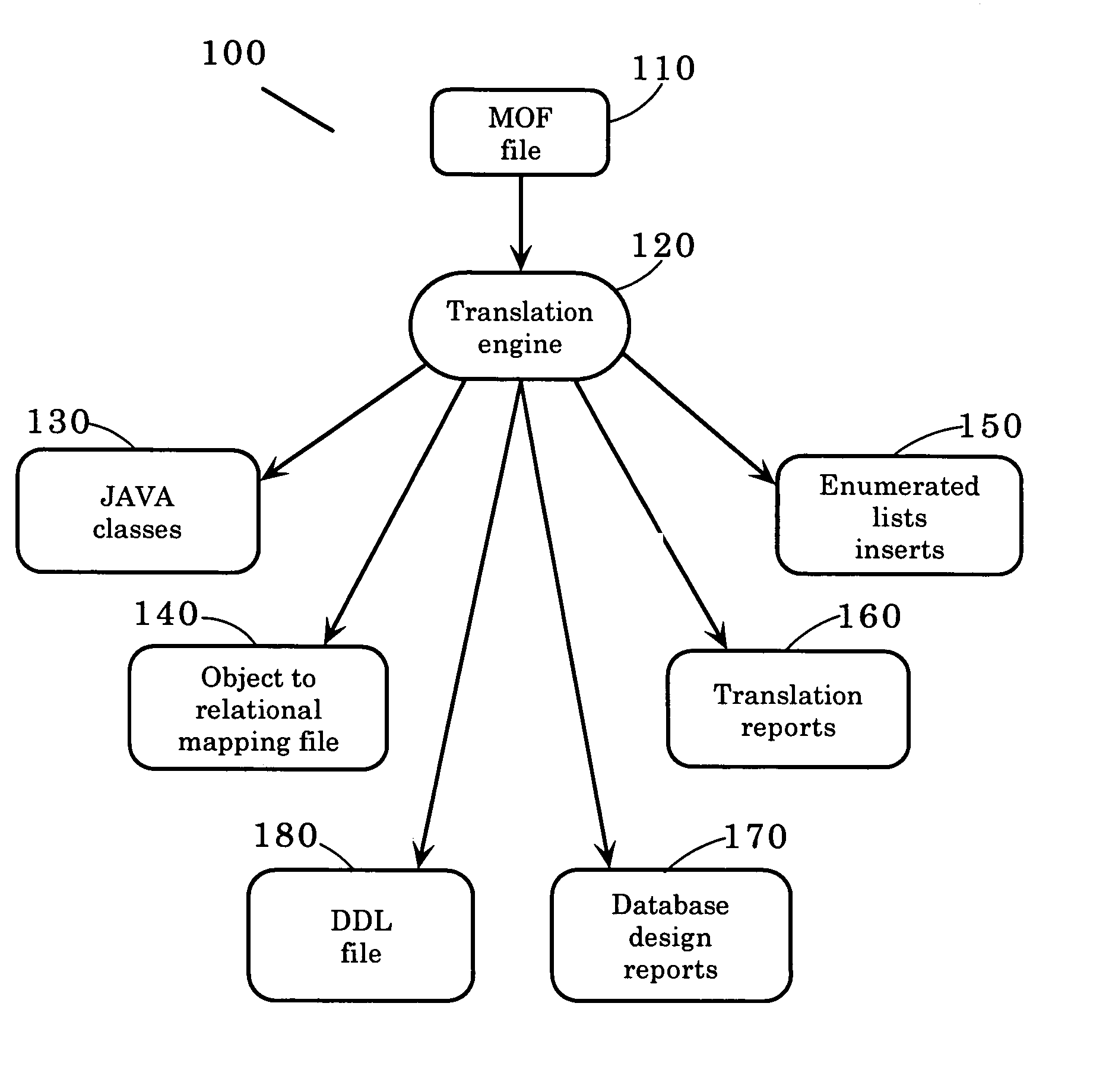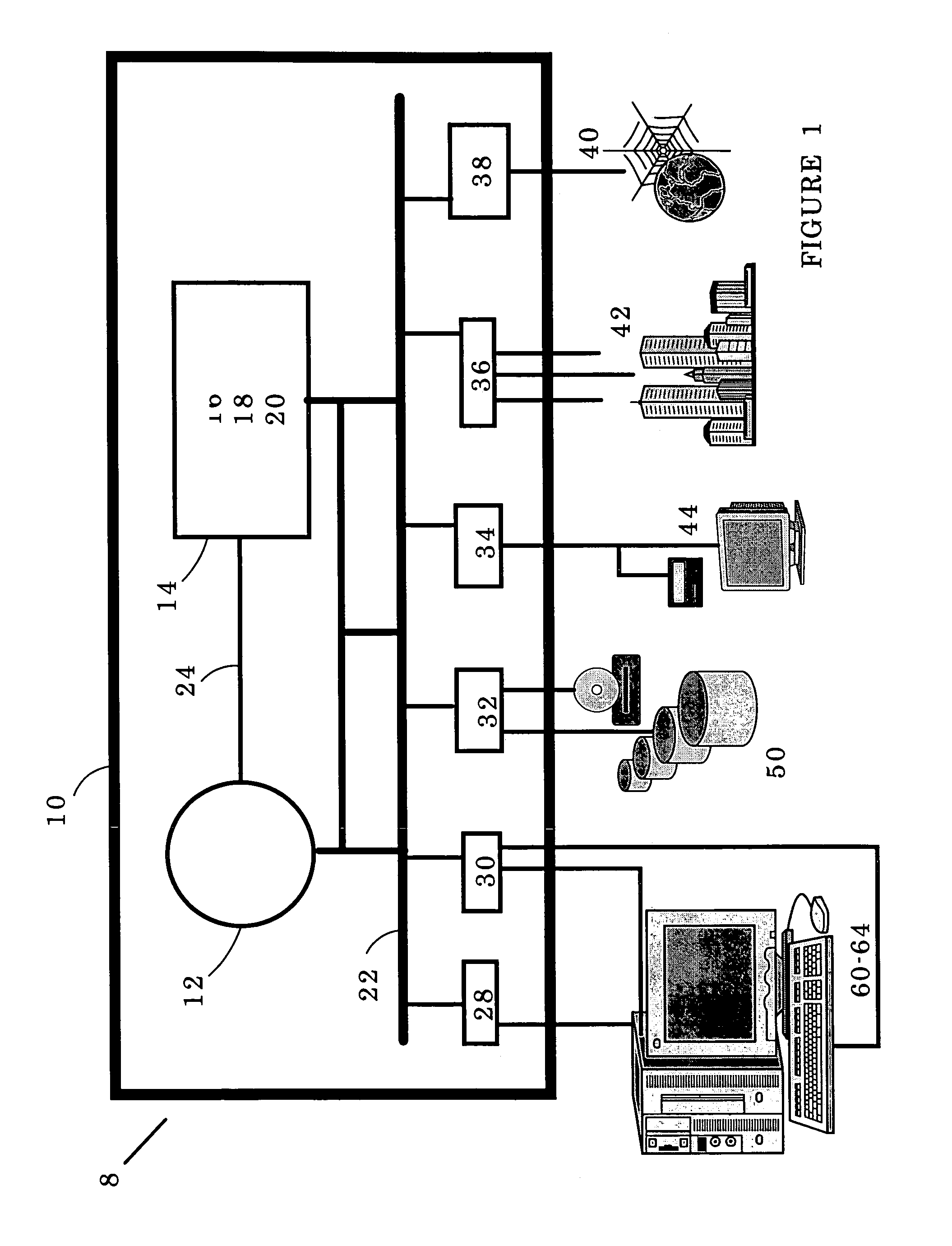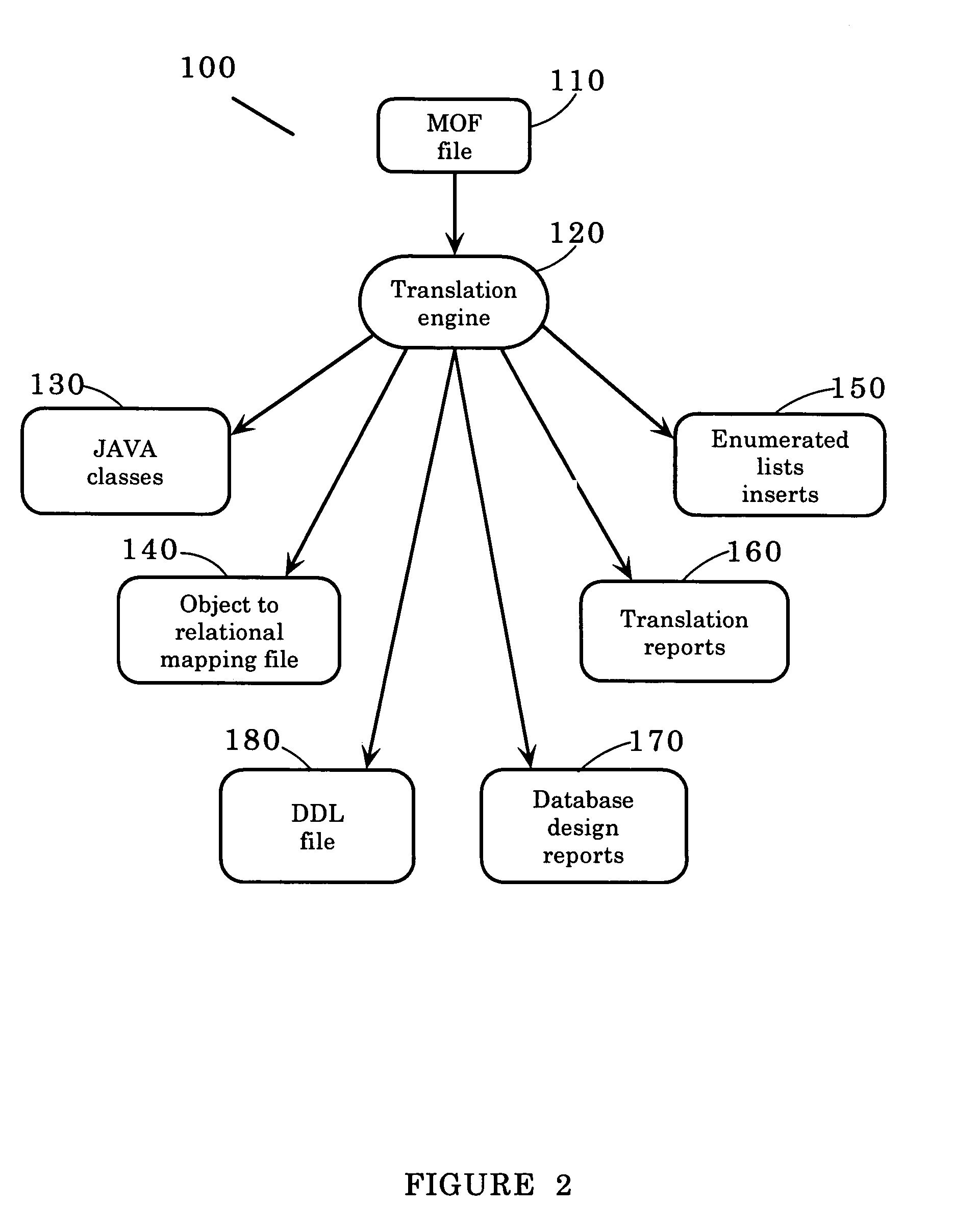transforming meta object facility specifications into relational data definition language structures and JAVA classes
a technology of meta objects and specification, applied in the field of databases and object-oriented programming, can solve the problems of not supporting object-oriented classes and attributes, not generating java classes, and not solving
- Summary
- Abstract
- Description
- Claims
- Application Information
AI Technical Summary
Benefits of technology
Problems solved by technology
Method used
Image
Examples
Embodiment Construction
[0021]Before proceeding with the detailed description of the invention, a summary of the terminology used herein is provided. An object is an abstract representation of a real-world concept or thing; for example, an object can represent a customer account in a banking application. An object may have an operation that defines an action that an object can perform, or an action that can be performed on the object or a property. For example, “make withdrawal” could be defined as an operation on a customer account object. Alternatively, an object may have a property that indicates the state of an object. Every property of an object has a value that defines the state of the object. A property can be either an attribute or a reference. An attribute defines a value that is stored within the object; for example, “current account balance” could be an attribute of the customer account object. The numeric value for the customer's account balance would be stored in the customer account object. A...
PUM
 Login to View More
Login to View More Abstract
Description
Claims
Application Information
 Login to View More
Login to View More - R&D
- Intellectual Property
- Life Sciences
- Materials
- Tech Scout
- Unparalleled Data Quality
- Higher Quality Content
- 60% Fewer Hallucinations
Browse by: Latest US Patents, China's latest patents, Technical Efficacy Thesaurus, Application Domain, Technology Topic, Popular Technical Reports.
© 2025 PatSnap. All rights reserved.Legal|Privacy policy|Modern Slavery Act Transparency Statement|Sitemap|About US| Contact US: help@patsnap.com



